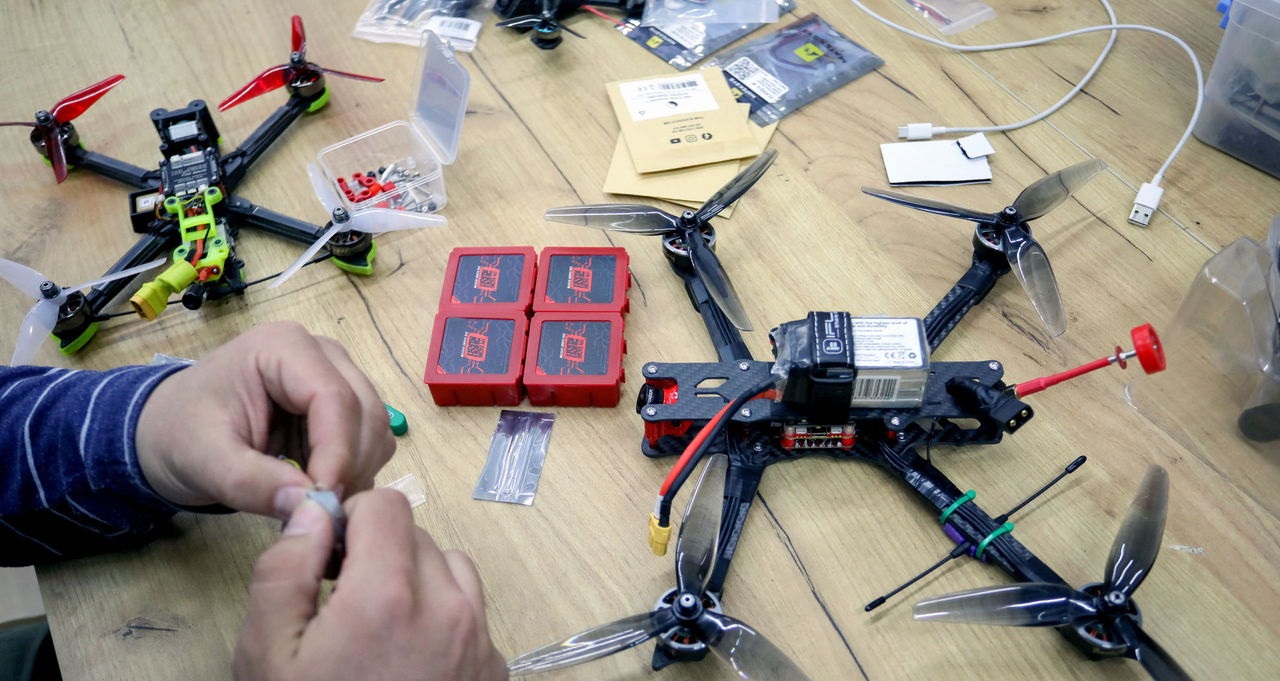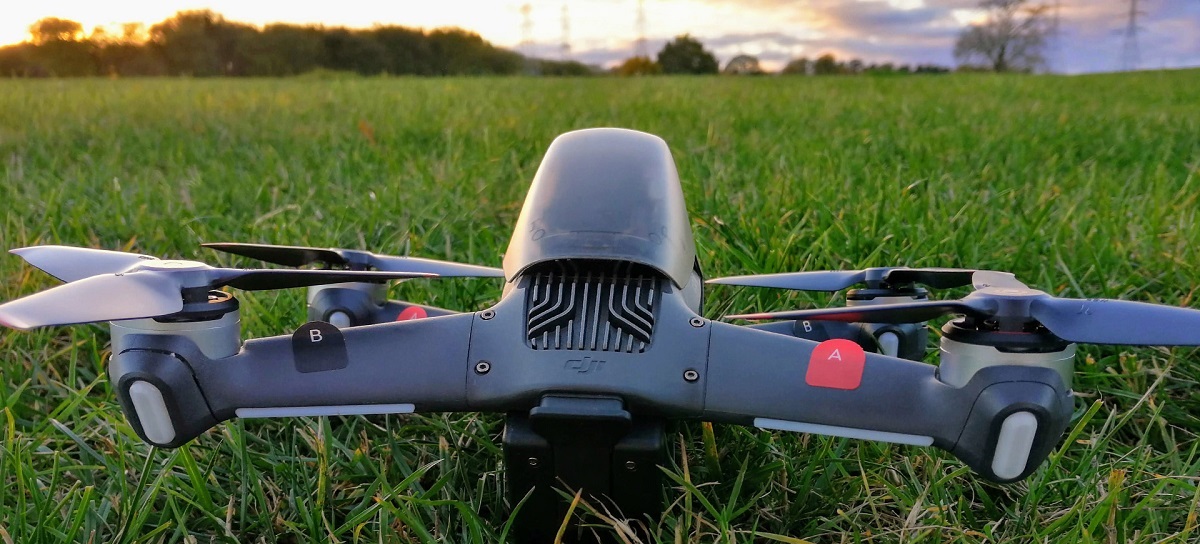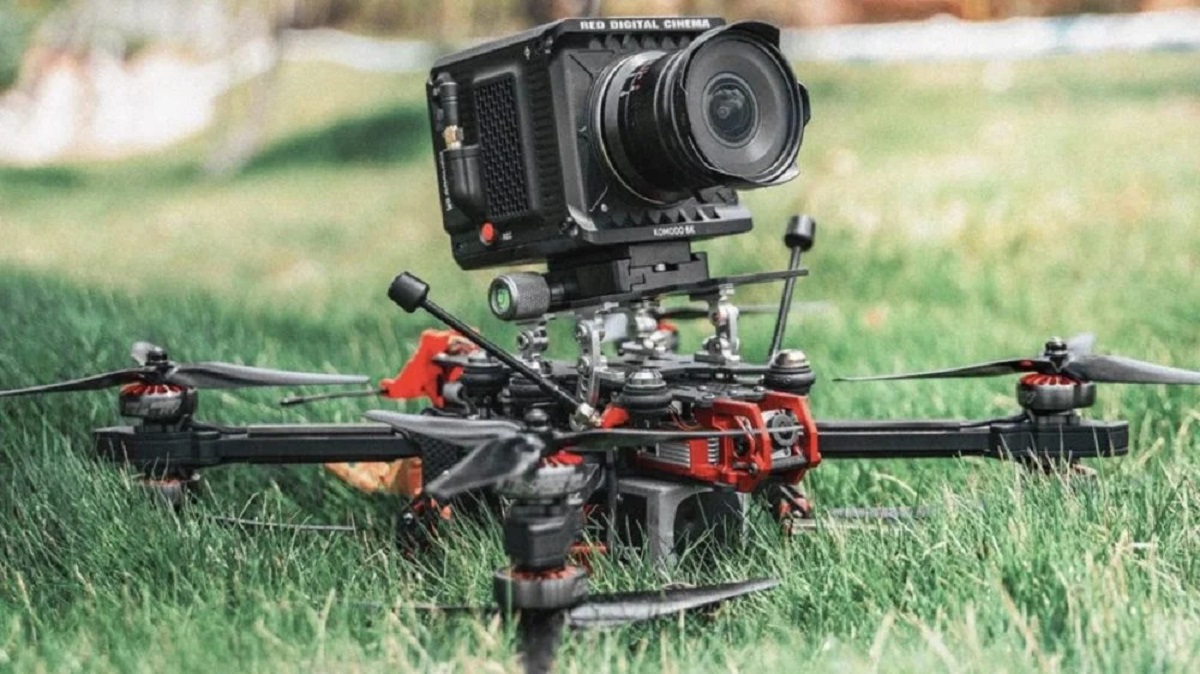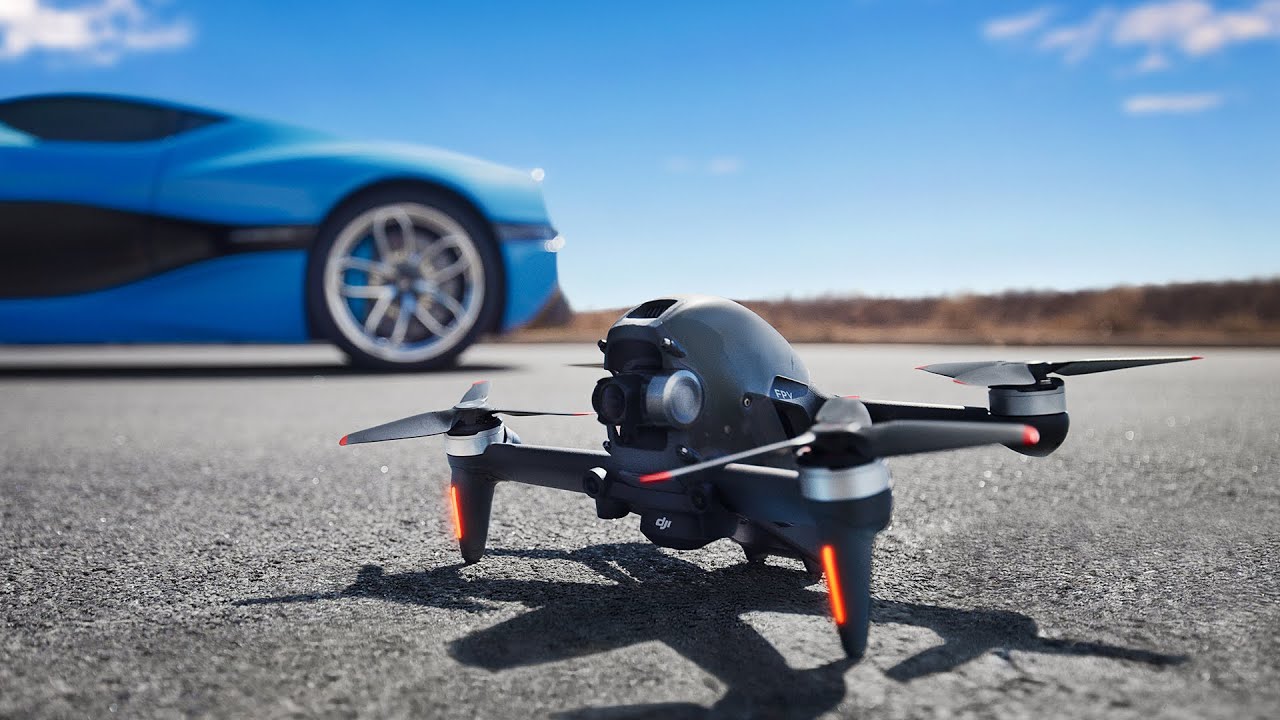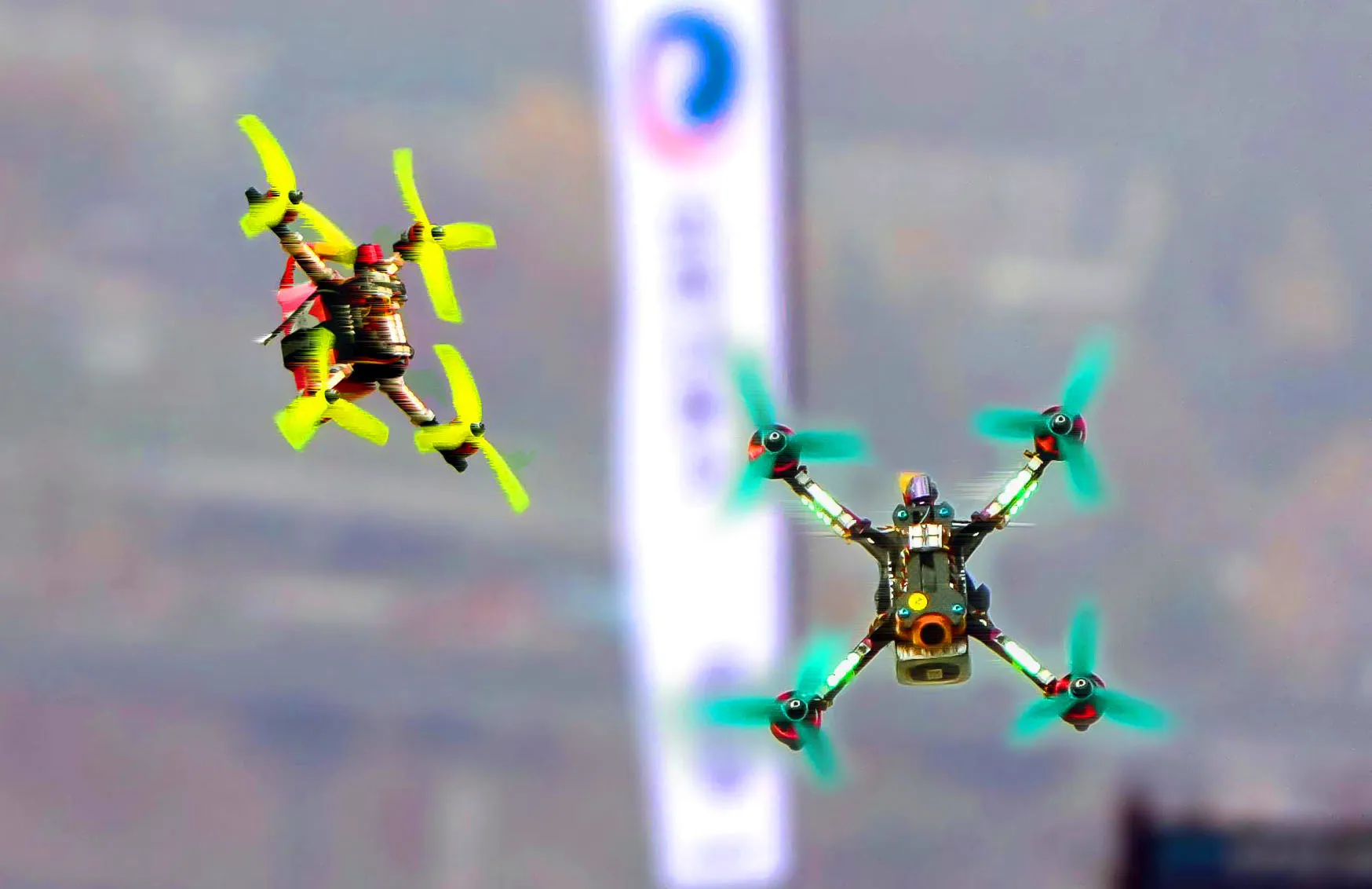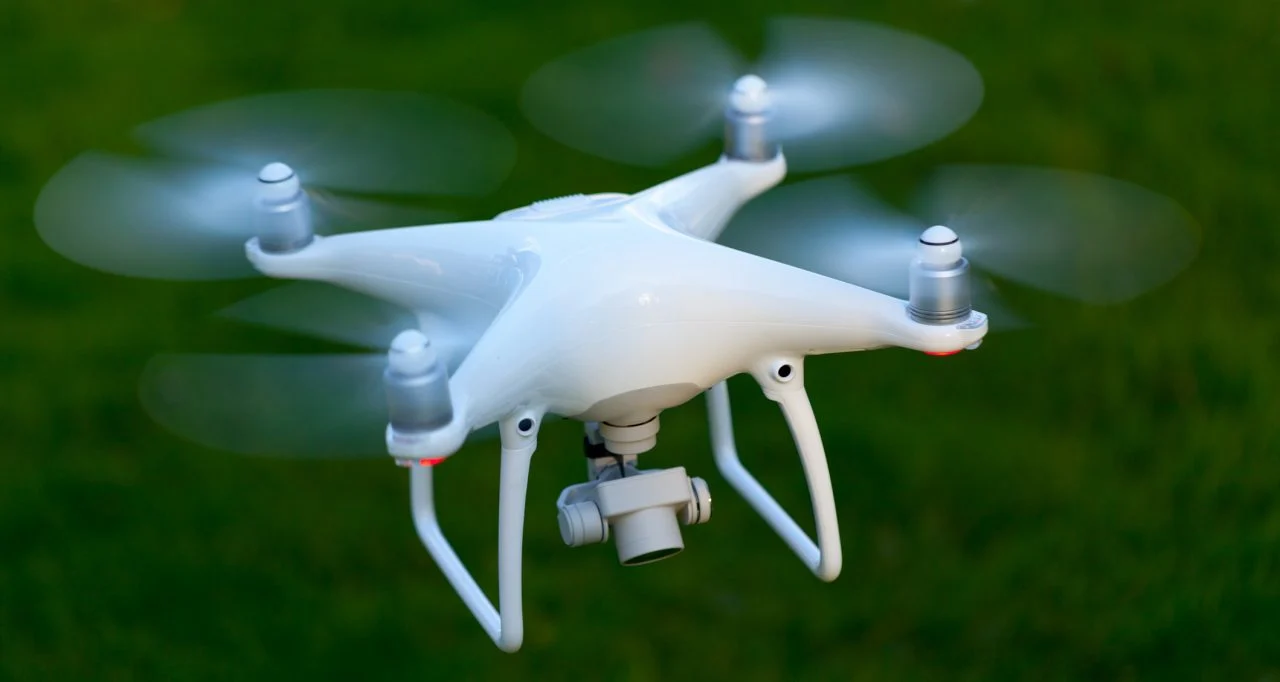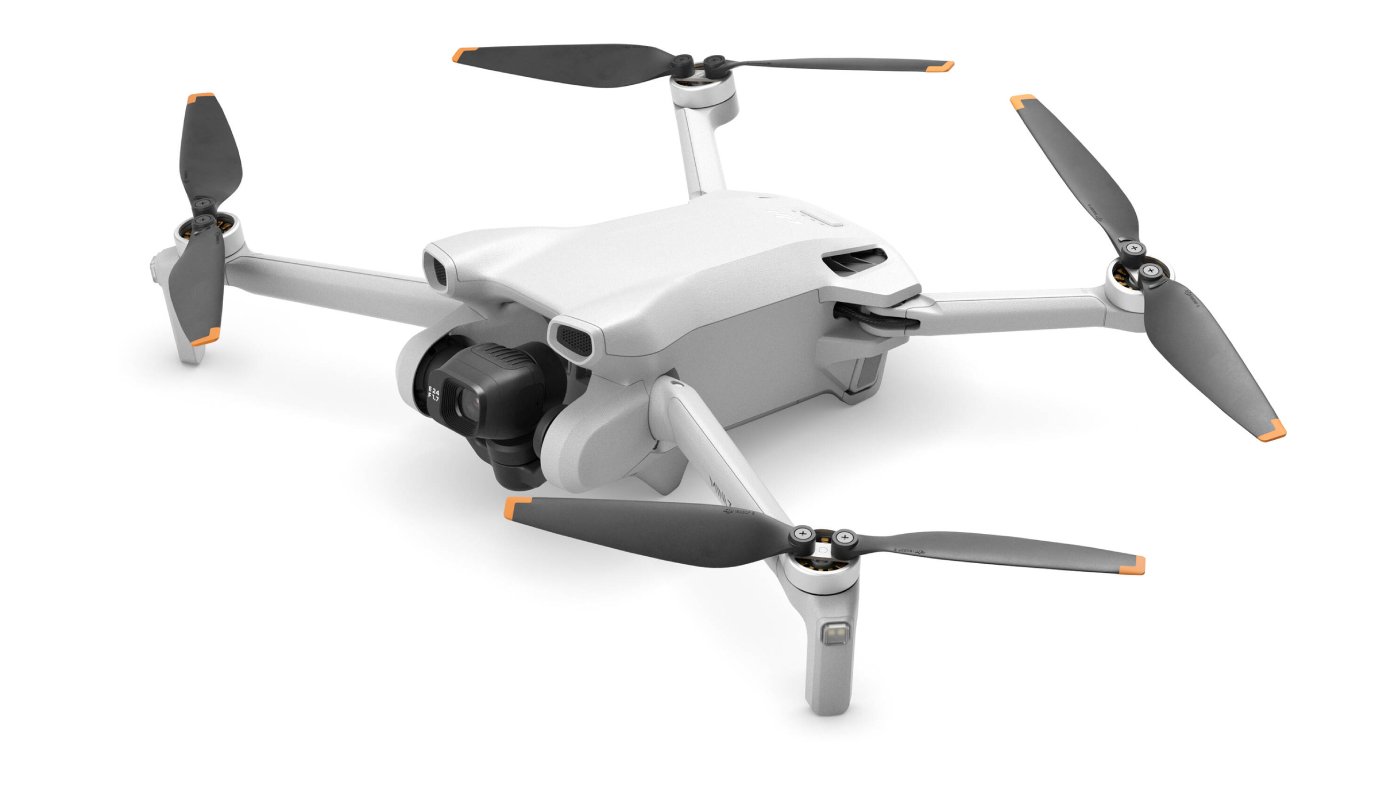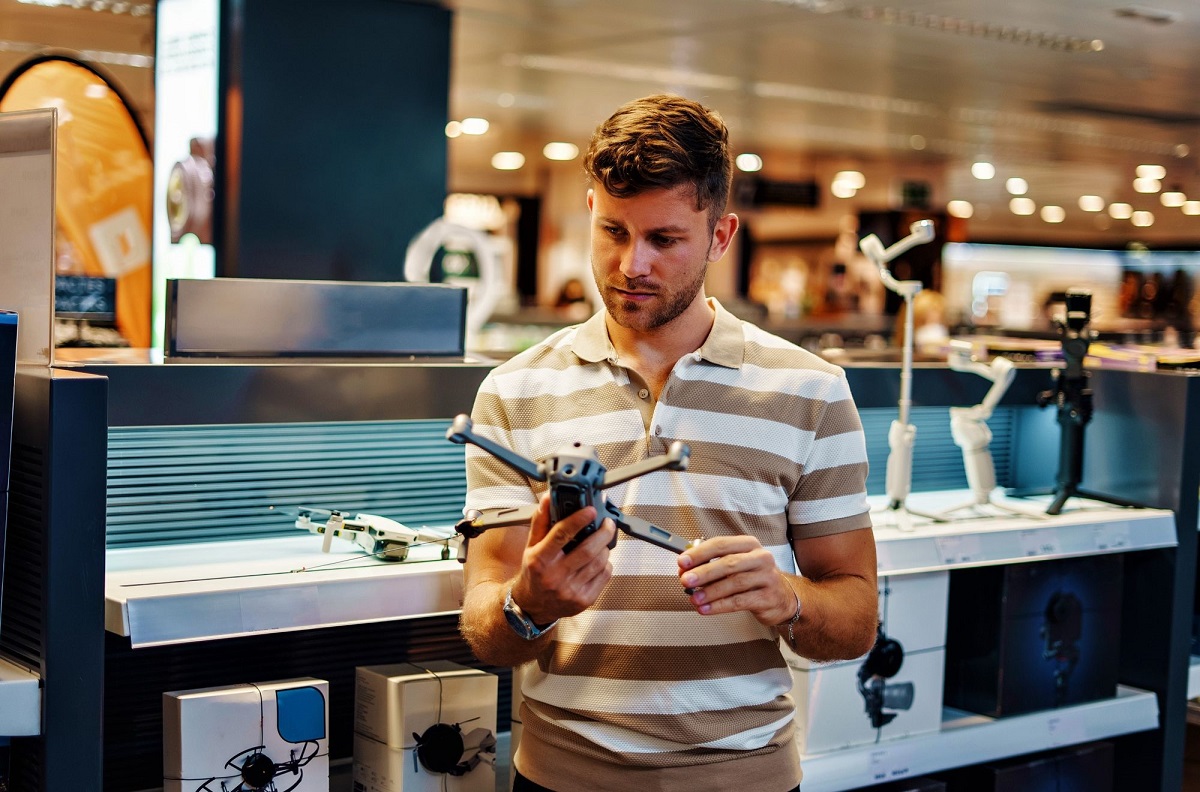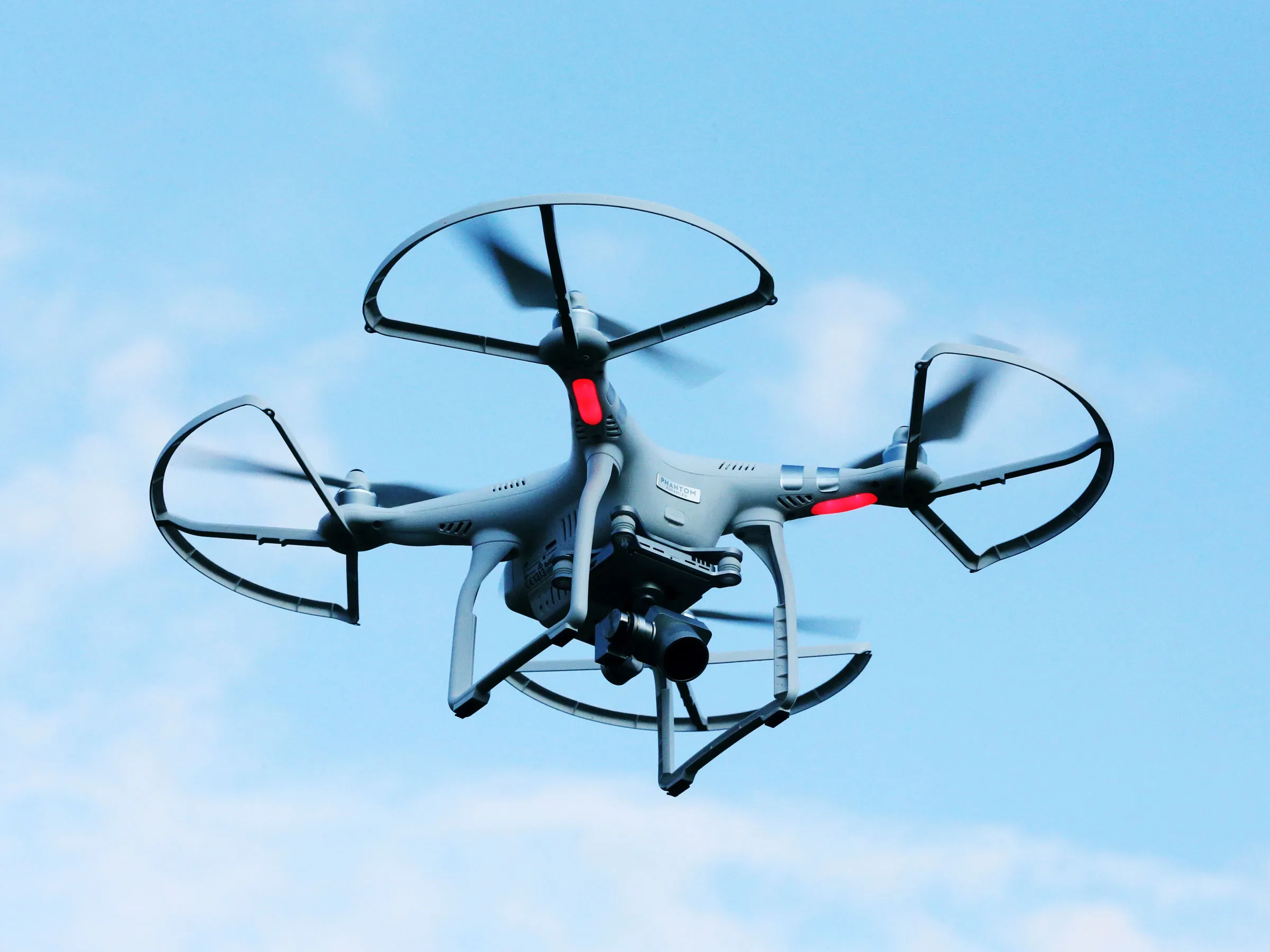Introduction
Unleashing the power of technology, racing drones have become a thrilling and competitive sport in recent years. These agile and nimble flying machines are capable of reaching mind-blowing speeds that leave spectators in awe. But how fast can a racing drone fly? In this article, we will explore the world of racing drones, uncover the factors that affect their speed, and discover the secrets to maximizing their velocity.
Imagine a world where drones zoom through the air at incredible speeds, maneuvering through obstacles with precision and grace. This is the realm of racing drones, where adrenaline junkies and tech enthusiasts come together to push the limits of what is possible. But what exactly is a racing drone?
A racing drone is a specially designed unmanned aerial vehicle (UAV) that is optimized for speed and agility. Unlike consumer drones used for aerial photography or recreational purposes, racing drones are built for one thing – speed. These drones feature lightweight frames, powerful motors, aerodynamic designs, and customizable flight controllers. They are typically equipped with first-person view (FPV) systems that allow the pilots to see through the eyes of their drones, immersing themselves in the thrilling experience.
When it comes to speed, several factors come into play that determine how fast a racing drone can go. One of the most crucial factors is the power-to-weight ratio of the drone. Simply put, the lighter the drone and the more powerful the motor, the faster it can fly. But it’s not just about raw power. The aerodynamics of the drone also play a significant role in its speed. Sleek designs, low drag coefficients, and efficient propellers can greatly enhance the drone’s velocity.
Another essential factor that affects the speed of a racing drone is the choice of batteries. Racing drones require high discharge rate batteries to provide the necessary current to the motors for rapid acceleration and sustained high speeds. Additionally, the type of electronics and flight controller used can also impact the drone’s performance. Advanced flight controllers with high processing power and responsive gyroscopes can translate the pilot’s commands into quick and precise movements.
What is a racing drone?
Before diving into the world of racing drones, it is important to understand what exactly they are and why they have become such a popular sport. A racing drone is a specially designed unmanned aerial vehicle (UAV) that is built for speed, agility, and precision. These drones are not your average consumer drones used for aerial photography or recreational purposes.
At first glance, a racing drone may look similar to its consumer counterparts, but upon closer inspection, you will notice several key differences. Racing drones are lightweight, compact, and sleek in design. They are engineered to be aerodynamic, slicing through the air with minimal resistance. Additionally, racing drones are equipped with powerful motors that can generate incredible amounts of thrust, propelling them forward at astonishing speeds.
One of the defining features of a racing drone is its first-person view (FPV) system. This technology allows the pilot to see through the eyes of the drone, providing a thrilling and immersive experience. FPV goggles or a monitor is used to transmit live video feed from the drone’s onboard camera, giving the pilot a real-time view of the flight. This enables the pilot to navigate their drone through courses and obstacles with precision and lightning-fast reflexes.
The sport of racing drones has gained traction worldwide, with organized competitions and events taking place in various locations. Pilots from all backgrounds, including hobbyists, professional racers, and even esports enthusiasts, participate in these adrenaline-fueled races. The goal is simple – be the fastest and most skilled pilot to complete the designated course in the shortest possible time.
Racing drones have gained such popularity due to their combination of technology, adrenaline, and competitive spirit. The thrill of flying at high speeds, the intense maneuvers through tight spaces, and the sheer spectacle of the races make this sport a thrilling spectator event as well.
With the advancements in drone technology, racing drones continue to evolve and push the boundaries of what is possible. From customized builds to advanced flight controllers and cutting-edge FPV systems, pilots are constantly looking for ways to maximize speed and performance.
Factors that Affect the Speed of a Racing Drone
When it comes to the speed of a racing drone, several factors come into play that can greatly impact its performance. From the design of the drone to the choice of components, each element contributes to the speed and agility of the machine. Let’s delve into some of the key factors that affect the speed of a racing drone:
1. Power-to-Weight Ratio:
The power-to-weight ratio is one of the most critical factors influencing the speed of a racing drone. Simply put, it refers to the ratio between the power generated by the drone’s motors and the weight of the drone itself. The higher the power-to-weight ratio, the faster the drone can accelerate and maintain high speeds. To achieve a high power-to-weight ratio, racing drones are built with lightweight frames and components while using powerful motors to provide ample thrust.
2. Aerodynamics:
The aerodynamics of a racing drone play a crucial role in its speed and maneuverability. The design of the drone, including the shape of its body, wings, and propellers, can minimize drag and optimize lift. Sleek and streamlined designs with reduced air resistance allow the drone to cut through the air effortlessly. Efficient propellers that generate high thrust with minimal turbulence also contribute to improved speed and agility.
3. Motor Performance:
The performance of the motors used in a racing drone greatly affects its speed. Powerful motors with high RPM (rotations per minute) capabilities and efficient torque curves provide the necessary thrust to achieve rapid acceleration and sustained high speeds. Motors with superior build quality and low electrical resistance are preferred by racing enthusiasts as they minimize heat generation and maximize power output.
4. Battery Choice:
The choice of battery has a significant impact on the speed and flight time of a racing drone. High-performance LiPo (Lithium Polymer) batteries with high discharge rates are commonly used in racing drones to deliver the necessary current to the motors for quick acceleration and sustained high speeds. These batteries are lightweight and have a high energy density, allowing the drone to maximize speed without compromising flight time.
5. Flight Controller and Electronics:
The flight controller and electronic components play a crucial role in the responsiveness and precision of a racing drone. Advanced flight controllers with high processing power and responsive gyroscopes allow for quick and accurate control inputs. This translates into rapid and precise movements, enabling the pilot to navigate the drone through challenging courses at high speeds.
By optimizing these factors and carefully selecting components, pilots can enhance the speed and performance of their racing drones. It’s a delicate balance between power, weight, aerodynamics, and control that allows these machines to reach mind-boggling speeds.
The Fastest Racing Drone in the World
In the ever-evolving world of racing drones, speed is the name of the game. Innovations in technology and advancements in engineering have led to the creation of incredibly fast drones that push the boundaries of what was once thought possible. One notable example of the fastest racing drone in the world is the ‘DRL RacerX’.
The DRL RacerX, developed by the Drone Racing League (DRL), holds the Guinness World Record for the fastest racing drone with an impressive top speed of 179.6 miles per hour (288.7 kilometers per hour). This drone combines cutting-edge design, powerful motors, and lightweight construction to achieve its unmatched speed.
The DRL RacerX features a sleek and streamlined body, designed to reduce drag and improve aerodynamics. It is built using lightweight materials such as carbon fiber, allowing it to reach high speeds while maintaining structural integrity. The custom-designed propellers generate intense thrust, propelling the drone forward with incredible force.
The heart of the DRL RacerX lies in its powerful motors. Equipped with high-performance brushless motors, this racing drone can generate an immense amount of power and torque. The motors work in perfect harmony with the advanced flight controller to provide precise and responsive control, enabling the drone to maneuver at blistering speeds.
Another contributing factor to the incredible speed of the DRL RacerX is the battery system. The drone utilizes specialized LiPo batteries with high discharge rates, delivering the required current to the motors for rapid acceleration and sustained high speeds. These batteries are designed to be lightweight to minimize the overall weight of the drone and maximize its velocity.
The DRL RacerX is not just an impressive engineering feat; it is also a demonstration of the ongoing efforts to push the limits of drone technology. The advancements made with this racing drone have paved the way for further developments in the field of UAVs, inspiring a new generation of racers and enthusiasts.
While the DRL RacerX may hold the current title of the fastest racing drone, the landscape of racing drones is constantly evolving. As technology continues to advance, new contenders will emerge, pushing the boundaries of speed even further. The quest for speed in racing drones is never-ending, and the future holds the promise of even more exhilarating and mind-blowing performances.
How Fast Can Racing Drones Fly?
Racing drones are known for their incredible speed, zipping through obstacle-filled courses with lightning-fast agility. But how fast can these drones actually fly? The top speeds achieved by racing drones depend on various factors such as the drone’s design, motor power, and aerodynamics.
On average, racing drones can reach speeds between 60 to 100 miles per hour (97 to 160 kilometers per hour). However, with advancements in technology and skilled pilots, some racing drones have been able to achieve astonishing speeds beyond that range.
Professional racing leagues and competitions like the Drone Racing League (DRL) and MultiGP challenge pilots to push the limits of speed. In these events, skilled pilots use custom-built racing drones that are finely tuned for maximum velocity. It is not uncommon to witness racing drones flying at speeds of 80 to 90 miles per hour (130 to 145 kilometers per hour) or even higher.
It’s worth noting that the ability to sustain high speeds for an extended period varies among racing drones. Some drones might be capable of achieving impressive bursts of speed for short distances, while others are designed for prolonged high-speed flights.
It’s important to keep in mind that achieving high speeds with racing drones requires skillful piloting. Maneuvering a drone at such velocities requires quick reflexes and precise control inputs. Skilled pilots are not only able to navigate through tight spaces at high speeds but also maintain control and avoid collisions.
The speed capabilities of racing drones are also impacted by the type of racecourse or environment. Outdoor courses with more open space allow drones to reach higher speeds, while indoor courses with tighter turns and obstacles may require more agility and maneuverability rather than just pure speed.
The world of racing drones is continuously evolving, and new technologies and innovations are constantly pushing the boundaries of speed. As drone technology continues to improve, it’s only a matter of time before we see racing drones achieving even more mind-blowing speeds.
Ultimately, the speed at which racing drones fly is a testament to the engineering prowess and skills of the pilots. These drones are a thrilling embodiment of cutting-edge technology and human ingenuity, combining to deliver exhilarating and jaw-dropping performances.
The Importance of Speed in Racing Drones
In the world of racing drones, speed reigns supreme. The ability to fly at high speeds is not just about the thrill and excitement it brings to the spectators, but it also plays a crucial role in the competitive nature of the sport. Here are some of the reasons why speed is of paramount importance in racing drones:
1. Thrill and Spectacle:
Speed is a fundamental element that adds to the adrenaline rush and excitement of watching racing drones. Witnessing these small, agile machines zoom through obstacle-filled courses at breakneck speeds is a captivating spectacle that keeps spectators on the edge of their seats.
2. Competitive Edge:
Speed is the key differentiator in racing drone competitions. Pilots strive to build and fine-tune their drones to achieve the highest speeds possible. The faster a drone can fly, the more competitive advantage it grants to the pilot on the racecourse.
3. Strategy and Timing:
Speed in racing drones is more than just raw power. It requires strategy and impeccable timing. Pilots must calculate when to throttle up or decelerate to maintain control while navigating complex racecourses. Effective use of speed can give pilots an edge in overtaking opponents and executing precise maneuvers.
4. Pushing Technological Boundaries:
The pursuit of speed in racing drones drives innovation and pushes the boundaries of drone technology. The constant quest for higher speeds has led to advancements in motor design, aerodynamics, materials, and flight controllers. The development of faster drones has a ripple effect, positively impacting the entire drone industry.
5. Showcasing Drone Capability:
Speed is a tangible representation of a racing drone’s capabilities. The ability to reach and sustain high speeds demonstrates the power and performance of the drone’s components, from motors and batteries to propellers and flight controllers. Racing drones push the limits of what drones can achieve, showcasing their potential in various applications beyond racing.
While speed is undoubtedly an essential aspect of racing drones, it is worth mentioning that it is not the only factor that determines success in the sport. Skillful piloting, precise control, and efficient maneuvering are equally important. The best racing pilots understand how to leverage their drone’s speed to their advantage while maintaining control and agility.
The importance of speed in racing drones cannot be overstated. It captivates audiences, drives competition, pushes technological boundaries, and highlights the incredible potential of drone technology. As this sport continues to evolve, we can expect to see even faster and more impressive performances from racing drones in the years to come.
Tips to Maximize the Speed of Your Racing Drone
Maximizing the speed of your racing drone requires careful consideration of various factors and fine-tuning of its components. Here are some tips to help you extract the maximum performance and velocity from your racing drone:
1. Optimize Power-to-Weight Ratio:
Achieving a high power-to-weight ratio is essential for maximizing speed. Use lightweight materials for the frame, minimize additional accessories that add unnecessary weight, and select powerful motors that generate ample thrust without sacrificing agility.
2. Fine-tune Aerodynamics:
Pay attention to the design and aerodynamics of your racing drone. Streamline the body and minimize drag by using sleek, low-profile frames. Choose propellers that are specifically designed for speed, ensuring they create enough lift while maintaining efficiency.
3. Choose High-Performance Motors:
Invest in high-performance brushless motors that are capable of generating high RPM and torque. Opt for motors known for their durability and efficiency, as they can provide the necessary power output for rapid acceleration and sustained high speeds.
4. Utilize High-Discharge Rate Batteries:
Select LiPo batteries with high discharge rates to meet the demands of your racing drone’s power-hungry motors. These batteries will deliver the necessary current to achieve rapid acceleration and maintain high speeds throughout your flights.
5. Optimize Flight Controller Settings:
Take the time to fine-tune your flight controller settings to optimize the responsiveness and control of your drone. Adjust data sampling rates, PID (Proportional, Integral, Derivative) gains, and other parameters to achieve the desired balance between stability and agility.
6. Consider Propeller Pitch and Size:
Experiment with different propeller pitches and sizes to find the optimal combination for speed. Props with a higher pitch can generate more thrust at higher speeds, while smaller propellers reduce drag and increase maneuverability.
7. Reduce Weight and Eliminate Excess Friction:
Minimize the weight of your racing drone by removing unnecessary accessories and components. Additionally, apply lubricants to bearings and moving parts to reduce friction, which can slow down the drone and decrease its overall speed.
8. Practice Precision Flying Techniques:
Develop your piloting skills by practicing precision flying techniques. Learn to perform tight turns, navigate through small gaps, and maintain control at high speeds. Mastering these skills will give you a competitive edge and allow you to fully utilize your drone’s speed potential.
Remember, maximizing the speed of your racing drone is a continuous process of experimentation, fine-tuning, and practice. Each component and adjustment can have a significant impact on your drone’s performance. By implementing these tips and consistently refining your setup, you can unlock the full speed potential of your racing drone.
Conclusion
Racing drones have revolutionized the world of aerial sports, combining the thrill of speed and the excitement of competition. These agile and powerful machines push the boundaries of what is possible, showcasing the advancements in technology and the skills of the pilots. From their lightweight frames to their high-performance motors, racing drones are meticulously designed to achieve mind-boggling speeds while maintaining precise control.
Throughout this article, we’ve explored the world of racing drones, understanding what they are and how they work. We’ve discussed the factors that affect their speed and the importance of velocity in racing competitions. We’ve learned about the fastest racing drone in the world and how technology continues to push the limits of speed. Additionally, we’ve provided tips to help maximize the speed of your own racing drone, allowing you to unlock its full potential.
Speed is the driving force behind racing drones, captivating audiences and fueling the competitive spirit of pilots. The thrill and spectacle of witnessing these flying machines zip through obstacle-filled racecourses at incredible speeds is a captivating experience for both participants and spectators alike.
As drone technology continues to advance and more enthusiasts join the ranks of racing drone pilots, we can expect to see even faster and more exhilarating performances in the future. The quest for speed will continue to inspire innovation, pushing the boundaries of what is possible in the world of racing drones.
Whether you’re a professional racer or a hobbyist, the pursuit of speed in racing drones is an ongoing journey of discovery and refinement. By understanding the key factors that affect speed, optimizing your drone’s components, and honing your piloting skills, you can unlock the true potential of your racing drone, experiencing the thrill of high-speed flights and achieving new levels of performance.
So strap in, hold on tight, and get ready to experience the exhilarating world of racing drones – where speed and precision intertwine, and the sky is truly the limit.







